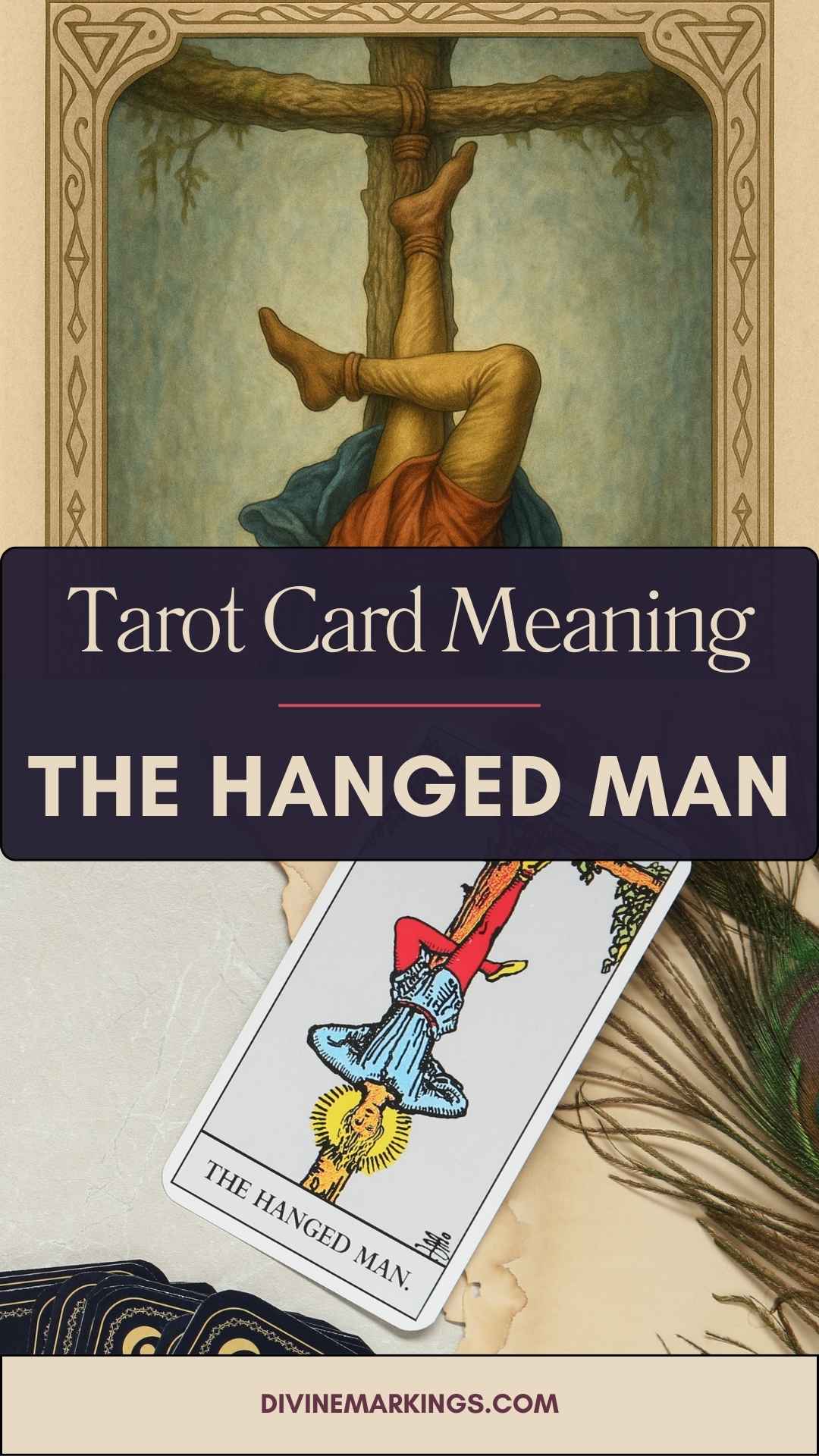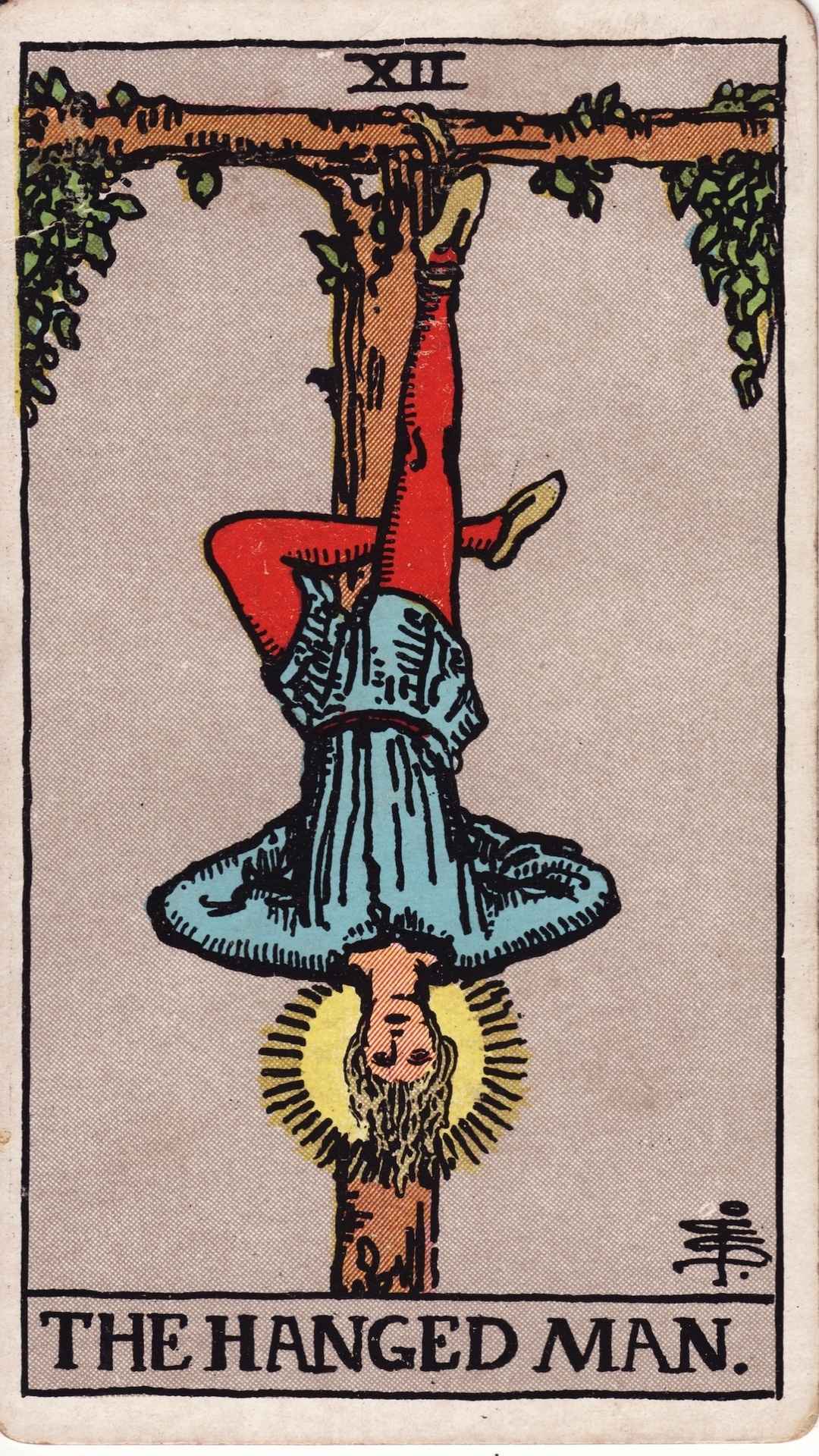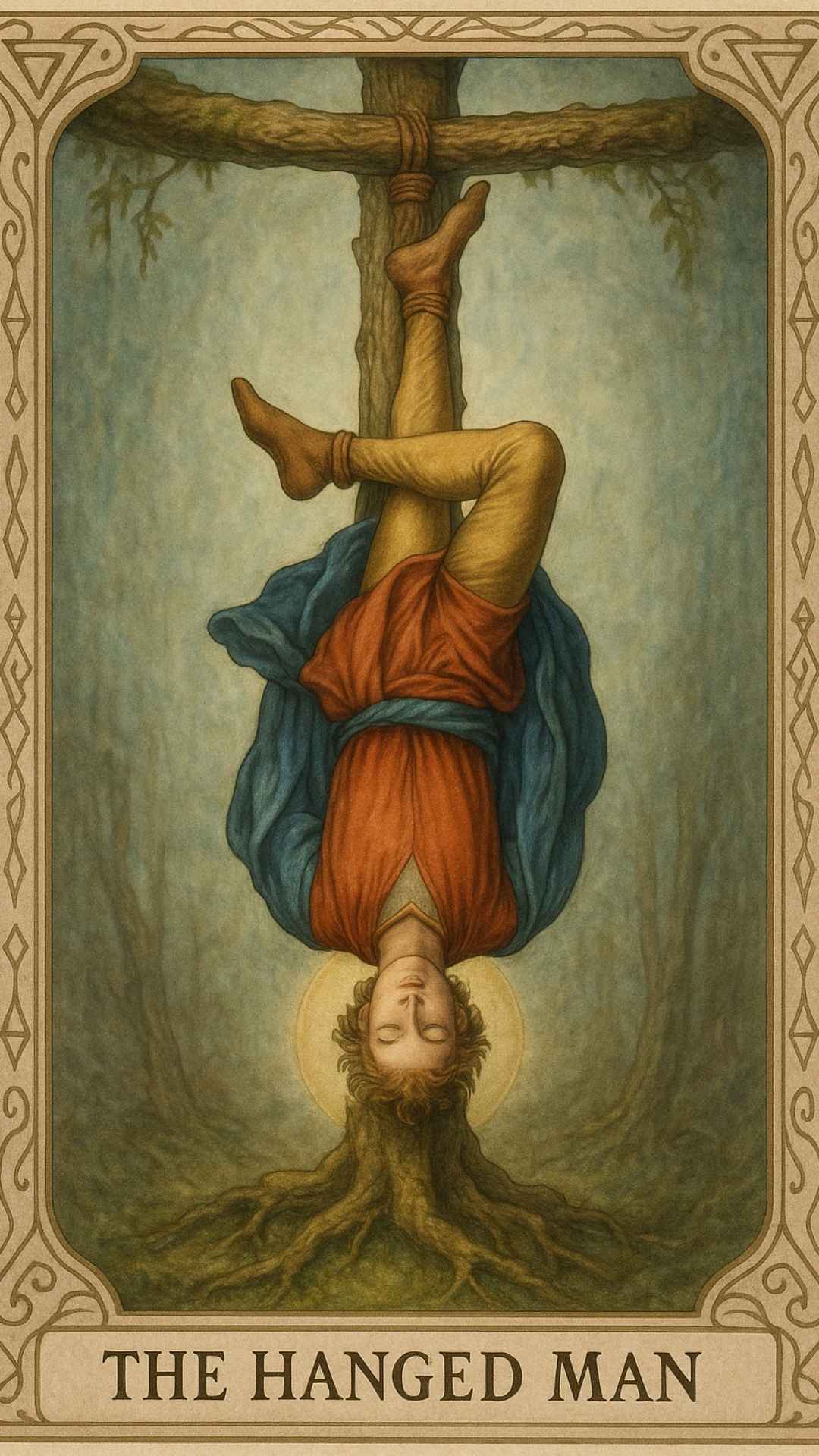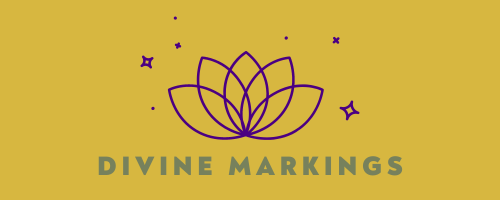The Hanged Man tarot card nudges you to pause and loosen your grip on control. True release and new understanding often show up when you surrender to the moment, instead of wrestling with it. This card’s like an invitation to step back and see your situation from a different angle.

When you pull the Hanged Man, it’s usually a signal to slow down and reflect. Maybe you feel stuck, but this pause is a rare chance to get clarity and let go of habits or ideas that just aren’t helping anymore.
By leaning into surrender, you make space for transformation. Sometimes, the only way forward is to accept what you can’t change and choose peace over struggle.
Overview of The Hanged Man Tarot Card
The Hanged Man is all about pausing, letting go, and seeing things with fresh eyes. It asks you to trust the process of change, even if it’s uncomfortable. This card’s been around since early tarot history and uses simple, powerful symbols to get its message across.
Major Arcana and Its Significance
The Hanged Man sits in the Major Arcana—those 22 cards that deal with big life lessons and spiritual shifts. It’s card number 12, coming right after Justice, marking a point where you’re encouraged to stop and reflect.
Because it’s part of the Major Arcana, the Hanged Man packs a punch: it’s not about little daily annoyances, but more about major turning points. Sometimes, letting go is what actually moves you forward. You might hit a challenge that requires patience and a new approach instead of charging ahead.
This card’s message? Sometimes “winning” is about surrender, not clinging tighter. It’s a pivotal moment for acceptance and insight.
The Hanged Man in Tarot History
This odd upside-down figure has been in tarot decks since at least the 15th century. He hangs by one foot, which looks bizarre but is loaded with meaning.
Back then, the card hinted at self-sacrifice and stepping away from the daily grind. Over time, people started seeing it as a symbol of pause and reflection, not punishment.
The Hanged Man gets linked to Neptune and the element water—both connected to feelings, intuition, and the mysterious flow of life. That fits perfectly for a card about surrender and trusting what you can’t see.
Key Imagery and Symbolism
You’ll usually see a man hanging upside down from a tree or beam, one foot tied, the other leg bent. His face is calm, which tells you this is voluntary, not torture. That upside-down view? It’s all about seeing things differently.
The glowing halo around his head signals enlightenment or a spiritual “aha” moment. His legs form a triangle, which hints at balance and change.
Neptune and water show up here too—Neptune rules dreams and intuition, water is about emotions and flowing with life. These symbols ask you to open up and let your understanding shift.
If you really look at the card, you’ll see how surrender can bring clarity and help you change for the better.
Core Meaning: Finding Release in Surrender

Sometimes, holding on just makes things harder. Letting go—though tough—can bring peace and open the way for growth. You’re being asked to accept what you can’t change and trust that release is actually part of your path.
The Value of Letting Go
Letting go isn’t giving up. It’s picking what’s best for you. When you drop old worries, anger, or fears, you free up space and energy for what really matters.
Surrender creates room for a new perspective. You might finally notice things you’ve missed. Sometimes, you have to make sacrifices—give up control, drop old attachments. It’s rarely easy, but it often leads to better things.
Understanding Acceptance and Trust
Acceptance is about seeing reality for what it is, without fighting it. You don’t have to like it, but you stop burning energy on resistance.
Trust matters here too. You trust yourself and life’s process, believing surrender will eventually bring growth or healing. Patience with yourself as things unfold is key.
With acceptance and trust, your mind calms down. Suddenly, you’re making better decisions, not just reacting from fear.
Release Control and Embrace Change
Trying to micromanage every detail? That’s a recipe for stress. Letting go of control eases the pressure and makes room for new possibilities.
Change is rarely comfortable, but it’s necessary. When you stop fighting what can’t be changed, you start working with it instead.
Focus on what you can actually influence. Let the rest flow. That’s how you stay steady, even when life feels like it’s up in the air.
Perspective and Personal Growth

When life throws you a curveball, sometimes you just have to hit pause and look at things differently. That shift can open the door to new ideas and help you grow. Taking a breather can bring insights you wouldn’t get otherwise.
Shifting Your Perspective
The Hanged Man encourages you to ditch old thought patterns. By flipping your perspective, you break free from habits or beliefs that keep you stuck. Suddenly, solutions you never saw before start popping up.
This isn’t always comfortable, but it does let you understand your choices and life better. Embracing that shift helps you move forward with more clarity.
Insights From Suspension and Pause
Sometimes, the most growth happens when you stop and just… wait. The Hanged Man values that suspended moment—a break from the usual hustle. When you pause, you give yourself space for self-discovery.
During these quiet times, you might realize what’s actually important. Letting your mind rest opens you up to deeper understanding. Accepting the pause can lead to meaningful change.
Spiritual Transformation and Awareness
Letting go in tough times can open up new ways to see yourself and your path. This process deepens your spiritual life and builds awareness by shifting how you think about control and patience.
Spiritual Growth Through Surrender
Surrender is about dropping the fight against what you can’t change—not throwing in the towel, but trusting the process of spiritual growth. When you let go, you make space for spiritual transformation.
Often, this feels like an in-between space, a pause in your usual thinking. It’s almost like an initiation, where your soul learns patience and openness. These moments can refresh your spirit and help you grow in understanding.
You start to see life from new angles, which builds spiritual awareness. That’s a big step: moving from struggle to acceptance.
Meditation and Reflection
Quiet reflection and meditation help you tune into your inner self. You get to watch your thoughts and feelings without judging them.
Meditation supports the lesson of surrender by building patience and acceptance. You become more aware of what matters and start dropping patterns that don’t help you grow.
Reflection uncovers hidden parts of your mind, deepening your spiritual understanding. Stillness lets you tap into that sense of connection and insight, guiding your transformation gently.
Common Symbols and Their Meanings
The Hanged Man card uses a handful of clear symbols to get its point across. These images highlight change, reflection, and seeing things differently. Understanding them helps you catch what the card’s really saying about accepting life’s pauses.
Neptune and Pisces Associations
The Hanged Man connects with Neptune, planet of dreams and spiritual insight. Neptune asks you to trust your gut, even when things feel murky.
Pisces, the zodiac sign, is all about sensitivity and going with the flow. It encourages you to loosen your grip and accept things as they come. When this card pops up, it might be time to embrace your emotions and stay open to new possibilities.
Neptune and Pisces together teach that surrender isn’t weakness—it’s trusting the unknown and being open to new ways of thinking.
The Paradox of Stillness
The Hanged Man shows someone hanging upside down, but looking totally calm. It’s a weird paradox: you look stuck, but there’s movement inside. Stillness here means stopping to get clarity.
By pausing, you let go of ideas or habits that aren’t working. The break gives you room to see life differently. You might feel stuck at first, but this quiet time actually frees you.
Sometimes, doing nothing is the best move. You’re not trapped—you’re just learning to see things in a new light.
Upright Meaning in Daily Life
When upright, the Hanged Man invites you to slow down and accept delays or changes without getting frustrated. You learn to find calm and balance, even when life isn’t moving at your pace. This approach helps you see things differently and find some inner peace.
Embracing Patience and Waiting
Seeing the Hanged Man upright? Time to practice patience. Instead of rushing, you let things unfold naturally. Waiting isn’t about being passive—it’s using that time to reflect and grow.
This patience helps you avoid stress and snap decisions. You give yourself space to figure out what matters before acting. That calmness can lead to better choices.
Finding Harmony in Resistance
The card also teaches you how to stay balanced when facing resistance. Rather than pushing hard against problems, you accept what’s happening. This isn’t about giving up, but finding peace within the challenge.
Surrendering control—just a bit—reduces inner conflict. You learn to match your efforts to the flow of events, creating harmony between your goals and reality. It helps you stay calm and not get stuck in anger.
Reversed Hanged Man: A Shift in Dynamics
When the Hanged Man flips upside down (ironically), it usually points to feeling stuck or delayed. It’s a nudge to look at where you might be resisting change or clinging to old habits—time to face those blocks and find new ways forward.
Stagnation and Feeling Stuck
Maybe things just aren’t moving. The reversed card signals stagnation—progress feels slow or totally stalled. You could be caught in a situation that’s dragging on, leaving you frustrated.
This often happens when you’re holding too tightly to control or refusing to see other viewpoints. If you catch yourself delaying action out of fear or doubt, it’s worth pausing and asking why things have stalled.
Overcoming Indecision and Delays
Indecision can take over with the reversed Hanged Man. You might freeze up, unable to pick a direction because you’re worried about the fallout. That kind of delay just drains your energy.
To get unstuck, try reevaluating your situation. Write out your options, think through outcomes. Sometimes, giving yourself a deadline helps you push past the pause. Delay isn’t always bad—it might just mean you need more clarity or a new perspective.
Breaking Old Patterns
The reversed card is a flashing sign that old patterns are holding you back. Maybe you’re repeating mistakes or sticking to habits that don’t serve you. Now’s the time to spot those patterns and start breaking free.
Changing habits takes honesty and a willingness to try new things. You might have to ditch comfort zones that feel safe but limit you. Even tiny changes can help you release what’s stuck and open new doors.
The Hanged Man in Relationships
This card asks you to pause and shift your view in your love life. It’s often about stepping back to reconsider your attachments and desires. Maybe it’s time to stop pushing for control or a certain outcome.
Letting Go of Control in Love
If the Hanged Man appears, it’s a nudge to stop trying to control every part of your relationship. Holding on too tightly to how things “should” be only creates tension.
Try accepting your partner’s choices and timing, even if they don’t match your own. This card encourages patience and trust in the natural rhythm of your connection.
Sometimes, letting go means resisting the urge to fix everything right away. Give space for feelings and changes to unfold. That can bring new peace and understanding to your relationship.
Lessons on Attachment and Desire
The Hanged Man asks you to notice when your desires are adding pressure. Maybe you’re attached to outcomes that aren’t helping you or your partner.
By stepping back, you can see which attachments are healthy and which just keep you stuck. Surrendering these old patterns can open the door to more freedom.
You don’t have to give up on love—just shift how you relate to your desires. This change can make love feel less stressful and more accepting.
Career and Financial Insights
In work and money matters, you might hit a stretch where things are unclear or in flux. This pause is a chance to see things differently and make smarter choices.
Embracing Opportunity in Transition
When your career or finances are in transition, the Hanged Man asks for patience and an open mind. It’s not just about waiting around—it’s about learning to see your situation from a new angle.
You might feel stuck, but this period can reveal opportunities you hadn’t noticed. Maybe it’s a job change, a new project, or a different way to handle money. Let go of old habits that aren’t working.
Adaptability is your friend here. Accepting the pause helps you find better paths forward, instead of forcing a decision that doesn’t fit.
Reevaluating Ambition and Decisions
This card nudges you to rethink your goals and how you make choices. Sometimes, you have to let go of a plan that feels right but isn’t working out.
Figure out what really matters to you at work or with money. You might need to sacrifice quick wins for something more lasting.
When facing decisions, take time to weigh your options. Avoid forcing things. Be willing to shift your approach or wait if needed. That patience can help you make better moves.
Health, Healing, and Self-Care
Taking care of your health means knowing when to pause and give yourself room to heal. Letting go of resistance can bring peace and help you feel better, inside and out.
The Power of Rest and Pause
If you’re stuck or overwhelmed, rest isn’t just a luxury—you need it to heal. Pausing lets your body and mind recharge. Sometimes, stepping back from stress or busy routines helps you see things more clearly.
Try these steps:
- Set aside quiet time each day.
- Don’t force yourself when you’re tired—listen to your body.
- Use deep breathing or gentle stretching to release tension.
Rest is a kind of reset. It supports healing and helps keep burnout at bay.
Overcoming Resistance to Change
Change can feel awkward or scary. The Hanged Man encourages you to let go of that resistance. Accepting where you are now can open up new perspectives and help you heal.
To get there:
- Remind yourself that change is part of growth.
- Be patient with yourself in tough times.
- Focus on what you can control and let the rest go.
Letting go creates space for healing and builds resilience for whatever comes next.
Common Misconceptions and Myths
People sometimes misread this card, especially if they just look at the image. It’s important to get what it really means, especially about endings and sacrifice.
The Hanged Man and Death
You might think this card means death, but it doesn’t. The Hanged Man is about pausing and changing your view. It’s a moment to step back and see things differently.
It’s not about literal endings, but about letting go of habits or ideas that aren’t helping anymore. That release is what helps you grow.
So, if you see this card, think transformation—not physical loss.
Martyrdom vs. Necessary Sacrifice
It’s easy to mix up the Hanged Man with martyrdom—giving up everything and suffering for no reason. But this card is about necessary sacrifice, not pointless pain.
Your sacrifice is a choice that brings something better. You give up control or comfort to gain insight or freedom. That’s not the same as being forced or playing the victim.
Think of the Hanged Man as encouraging a smart surrender, where your sacrifice has real purpose. It’s about challenges that bring growth.
Tarot Readings and Practical Applications
The Hanged Man asks you to pause, see things differently, and find clarity through surrender and patience. You can use its energy to shape your habits and deepen self-reflection.
Integrating the Hanged Man in Daily Practice
Start your day with a moment of stillness. It sets the tone for handling challenges without rushing—just like the Hanged Man suggests. When you face tough choices, remind yourself to let go of control and see what unfolds.
In readings, the Hanged Man signals a need for patience and fresh perspective. Use that as a guide to step back and observe your situation. It’s not about giving up, but about finding wisdom in waiting.
Try deep breathing or gentle stretching daily. These habits help you relax and reflect, making it easier to let go of stress. Over time, you might notice more clarity and calm in tough moments.
Affirmations and Journaling Prompts
Affirmations can reinforce the Hanged Man’s message. Try:
- I release control and trust the process.
- I am open to new perspectives.
- Patience brings me wisdom and clarity.
Write them on sticky notes or say them out loud when you’re stuck.
Journaling helps too. Prompts like:
- What am I holding onto that no longer serves me?
- How can I see this problem from a different angle?
- What small sacrifices could lead to greater growth?
Answering these can help you explore your feelings and encourage surrender without feeling powerless.
Astrological, Mythological, and Cultural Connections
The Hanged Man card ties deeply to themes of change, patience, and shifting perspective. You’ll see these ideas in astrology and in stories from all over the world.
Pisces and The Hanged Man
This card is often linked to Pisces—the sign known for intuition, sensitivity, and letting go. That fits perfectly with the Hanged Man’s message of surrender and waiting.
When this card shows up, it might hint at a time of spiritual initiation, much like Pisces’ journey inward. You might feel called to pause and trust your feelings. Sometimes, you just have to accept what’s out of your hands to find real peace.
The Archetype Across Cultures
The upside-down figure appears in myths and stories everywhere. It usually represents change or sacrifice. Old tales often show heroes who have to surrender or let go for a while to gain new wisdom.
In many cultures, this image is a symbol of initiation—a rite of passage where you gain new insight. The upside-down pose is about seeing things differently. So, when you see the Hanged Man, you’re being invited to step outside your usual thinking and welcome transformation.
Frequently Asked Questions
This card usually asks you to pause, shift your view, and consider how surrender could help in love, emotions, or your future. It’s packed with symbols and has different meanings if it’s reversed.
What insights can The Hanged Man tarot card provide for love and relationships?
The Hanged Man says you might need to let go of old patterns or control in relationships. It encourages patience and understanding, helping you connect in new ways.
Sometimes it’s a hint to accept things as they are for now, instead of forcing change.
How does The Hanged Man card suggest handling feelings and emotions?
It invites you to step back and observe your feelings, rather than react right away. Surrender to your emotions and give yourself time for clarity.
This calmer approach can reveal solutions you missed before.
What does it mean when The Hanged Man appears in a tarot reading as a reversed card?
Reversed, the card often means you’re resisting change or afraid to let go. Maybe you’re holding on to beliefs or situations that aren’t helping anymore.
It’s a nudge to face what you’re avoiding so you can move forward.
Can The Hanged Man tarot card be interpreted as a yes or no, and what factors influence this?
The Hanged Man usually means “maybe” or “wait” more than a clear yes or no. It suggests a pause before making decisions.
Your question and the other cards in the spread will shape the final answer.
In terms of future predictions, what does The Hanged Man indicate when it appears in a tarot spread?
The card hints at a pause or time for reflection ahead. You might need to sacrifice something or change your view to grow.
Progress will likely come from surrender, not force.
What are some key symbols associated with The Hanged Man when it appears in its upright position?
Look for the upside-down figure, hanging by one foot, showing a fresh perspective. His calm face stands for acceptance and peace in the pause.
The halo or glow around his head is all about wisdom gained through surrender.
